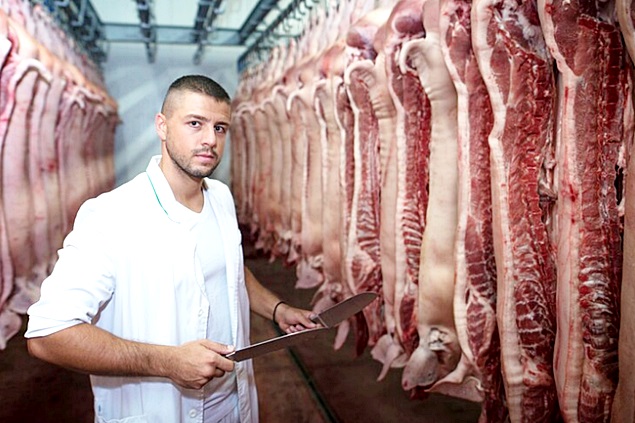1508

Constant production gains, coupled with weaker consumption, continue to exert pressure on global pork markets and trade. This is a brief summary of Rabobank's latest quarterly pork report.
More regions in a bind
Overall, the bank stated, lower feed costs, better animal health, and improved productivity support industry optimism despite challenging profitability and uncertain consumption trends.
After productivity challenges in 2022 and 2023, several key growing regions seem to be turning a corner, the bank wrote. While disease pressure is still an issue in some regions, overall herd health has improved.
In a press release, the bank's senior animal protein analyst, Christine McCracken, said, "A renewed focus on cost reduction, given inflationary pressures resulting in the elimination of less productive operations, also contributes to a recovery in production per sow. Although this improvement is a welcome trend and reduces costs, additional production exacerbates regional surplus and weighs on the market."
Meanwhile, the reduction in breeding stock in most geographic areas outside Europe and South Korea is slow, despite ongoing margin pressure and limited optimism for a quick global trade recovery, the bank said.
Feed prices improve
Corn and soy prices dropped in the third quarter of 2023, following a good North American harvest that helped replenish stocks, and expectations for a large South American harvest, the bank wrote.
Consumers are adapting to inflationary pressures; however, pork remains a staple food, and overall consumption trends remain stable. Nevertheless, package types and sales channels continue to change. McCracken commented, "With consumers still cautious, especially in the face of growing geopolitical uncertainty, we expect continued focus on cost reduction. Pork consumption should benefit from the high cost of competing proteins and more consumers cooking at home."
McCracken concluded, "In the last quarter of 2023, we expect global trade to remain slow, given large stocks, relatively high domestic production, and low pork prices in key importing regions. Rising pork prices in the EU may also limit export volumes." Here's the forecast by geographic areas.
North America
For North America, Rabobank expects productivity growth to increase short-term production, putting pressure on pork markets. Contraction of the herd remains slow, supported by lower-cost feed.
Brazil
For Brazil, Rabobank expects the industry to benefit from a 26% year-on-year drop in feed costs. Pork is expected to maintain competitiveness against other higher-cost proteins in both domestic and export markets in the fourth quarter.
Europe
Pork production in the European Union (27 countries) and the United Kingdom has sharply declined, Rabobank reported. In the first 7 months of 2023, it would decrease by 8.6% year-on-year. In Germany, sow numbers contracted by 2% in June 2023 compared to December 2022. A year earlier, the contraction was 12% during the same period. The contraction of the sow herd is expected to slow due to improved producer margins. Exports remain weak due to relatively high prices and weaker global economies.
China
Pork prices have been volatile, but they are expected to remain steady in the fourth quarter. The bank writes, "Looking into 2024, we expect prices to modestly increase from 2023 levels, as supply is likely to remain tight due to recent herd liquidation, while consumption continues to improve." Imports are expected to be slow in the fourth quarter due to ample stocks and weak demand, Rabobank writes.
Southeast Asia
Vietnamese pork prices are declining due to a temporary increase in supply caused by outbreaks of ASF but are expected to rise in the fourth quarter. Interestingly, Rabobank also highlights "pig smuggling across the border in Vietnam," which would also weigh on the market. Recovery of the herd in the Philippines is slow due to ongoing diseases and concerns about inflation.





